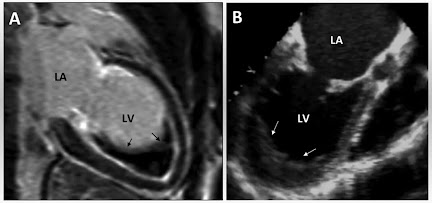Transport across the cell membrane
The fluid which is present inside the cell membrane known as intracellular fluid (ICF), and the fluid which is present out side the cell is known as extracellular fluid (ECF).
The cell membrane is present between ICF and ECF. This cell membrane is semipermeable and it allows selective molecules through it.
 |
| Transport across cell membrane |
Process : the movement of substances across cell membrane by following two process...
1. Passive transport
2. Active transport
Passive transport : use own energy , no ATP use.
Types :
1. Diffusion :
Definition - a process in which solute move from higher concentration area to lower concentration area known as diffusion.
Diffusion are two types...
A. Simple diffusion : in which
a. Lipid layer of cell membrane which is known as simple lipid diffusion. This layer is permeable to lipid soluble substances like oxygen and carbon dioxide.
b. Protein layer of cell membrane which is known as protein diffusion. This layer is permeable to water soluble substances like electrolytes.
Diffusion through channels : cell membrane have small pores which are selective permeable in nature called channels . When the cell is resting condition than channel remain closed, when the cell is functioning than channels are opened.
a. Voltage gated channel : when channel are open by electrical impulses called voltage gated channel.
b. Ligand gated channel : when channel opens by the chemical stimulus are known as ligand gated channel.
B. Facilitated / carrier mediated diffusion : in this process transport occur with the help of carrier protein.
2. Osmosis : when water move from low solute concentration to high solute concentration.
Active transport : movement of substances from lower concentration to higher concentration .and required energy in the form of ATP.
Types:
1. Primary active transport : in this process the energy is directly obtained from the ATP.
Like - a. Na+ - K+ (Na - K pump)
b. Ca+ (Ca pump)
c. K+ - H+ (K - H pump)
2. Secondary active transport : this process in which energy use indirectly (created by primary active transport). It is mainly two types...
A. Co transport : when two molecules move in same direction is known as co transport.
Requirements for the co transport -
a. Primary active transport for indirect energy.
b. Carrier protein.
c. Sympoters - (Na + Glucose, Na + Amino acids ).
Main side: a. Intestinal epithelium.
b. Renal tubules of the kidney.
B. Counter transport : when two molecule move in different direction.
Requirements for the counter transport -
a. Anti porters - two molecule attach with same carrier protein in different direction. like Na - H, Na - Ca.
b. Carrier protein.
c. Primary active transport for indirect energy.
Main side: a. Proximal convoluted tubule (PCT) - for Na - H, Na - Ca.
3. Vesicular active transport : it is following two types...
a. Endocytosis.
b. Exocytosis.
 |
| Endocytosis and exocytosis |
A. Endocytosis : Macro molecule are very large in shape so they can't enter the cell, then they enters the cell by the process of endocytosis.
Types: these are three types...
a. Pinocytosis / cell drinking : it is the process by which macro molecule like bacteria, antigens enters into the cell.
Mechanism -
-Macro molecule attach to the surface of cell.
-Now cell membrane evaginate around the macro molecule.
-Now cell membrane engulf it.
-Macro molecule convert into vesicle (known as endosome) .
-Now hydrolytic enzyme destroy them.
b. Phagocytosis / cell eating : in this process through which particles enter the cell. The cell which perform the function of phagocytosis are known as phagocytes
Types of phagocytes -
1. Polymorphonuclear ( Neutrophil or Microphages)
2. Macrophages or monocytes
Stages :
a. Attachment or opsonisation : generally phagocytes and micro organism have negatively charged. Due to this negative charge repel each other.
Now phagocytes will become positively charged and will convert into opsonin than attach to micro organism.
b. Engulfment : Now it will formed pseudopod, by this ( pseudopod) easily engulf micro organism or other materials.
c. Secretion : Now W.B.C. will secret hydrolytic enzyme, which act on foreign particles.
d. Degradation or killing : Now micro organism will be destroyed by hydrolytic enzyme.
c. Receptor mediated endocytosis : it is transport of macro molecule with the help of receptor protein
Structure: the surface of cell membrane contain a pit. This pit have receptor protein known as clathrin. Pit and clathrin together known as receptor coated pit which help in endocytosis.
Mechanism - material bind with the receptor and formed a complex known as receptor material complex .
B. Exocytosis : it is the process by which a substance comes out of a cell.
It is the opposite phenomenon of endocytosis.
Mechanism : -Macro molecule convert into vesicle (known as exosome).
-Macro molecule attach to the surface of the cell.
-Now cell membrane evaginate the macro molecule.
-Now macro molecule comes out of the cell.
Download book ( physiology symbulingum)






No comments:
Post a Comment
Please do not enter any spam link in the comment box